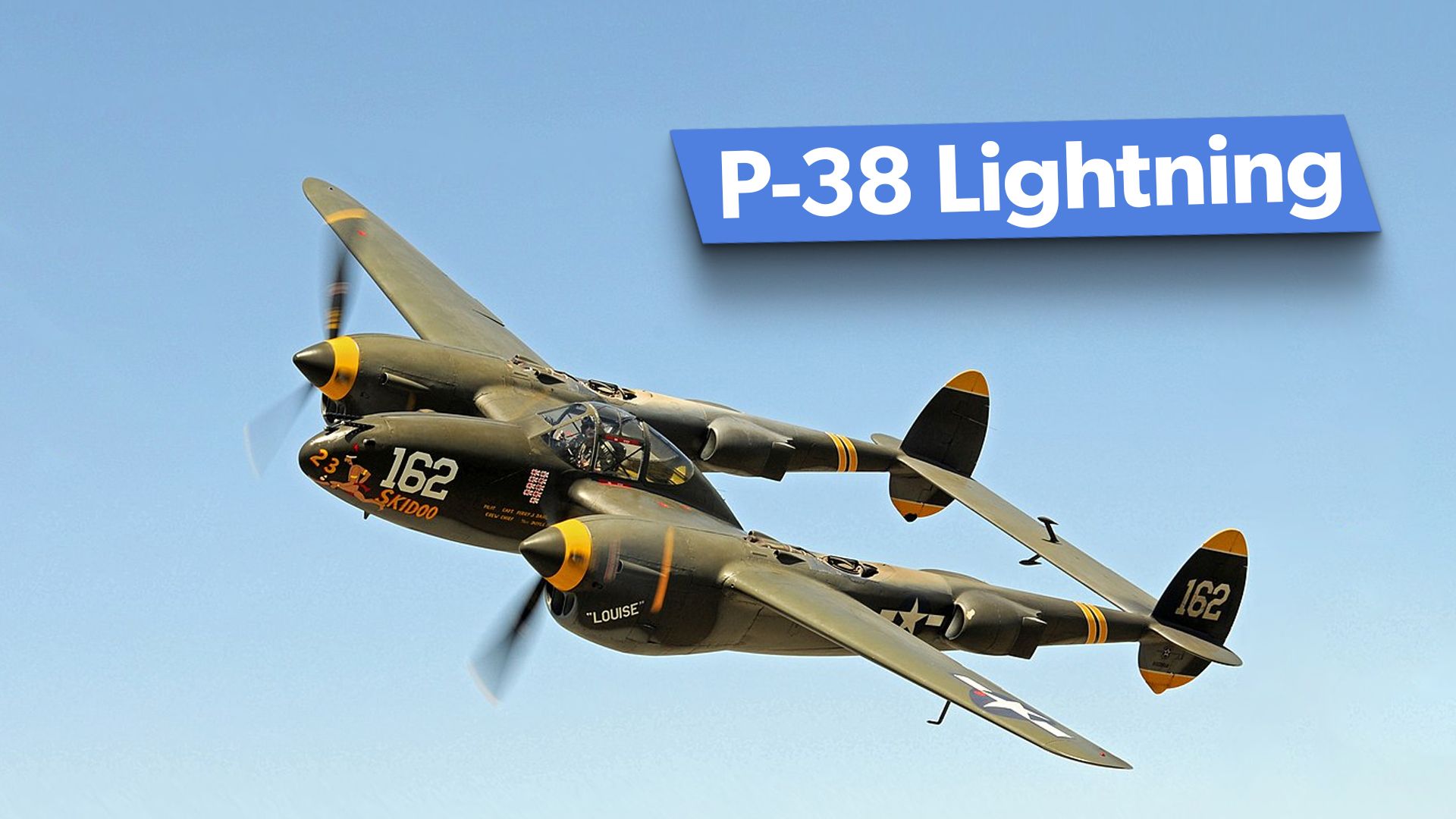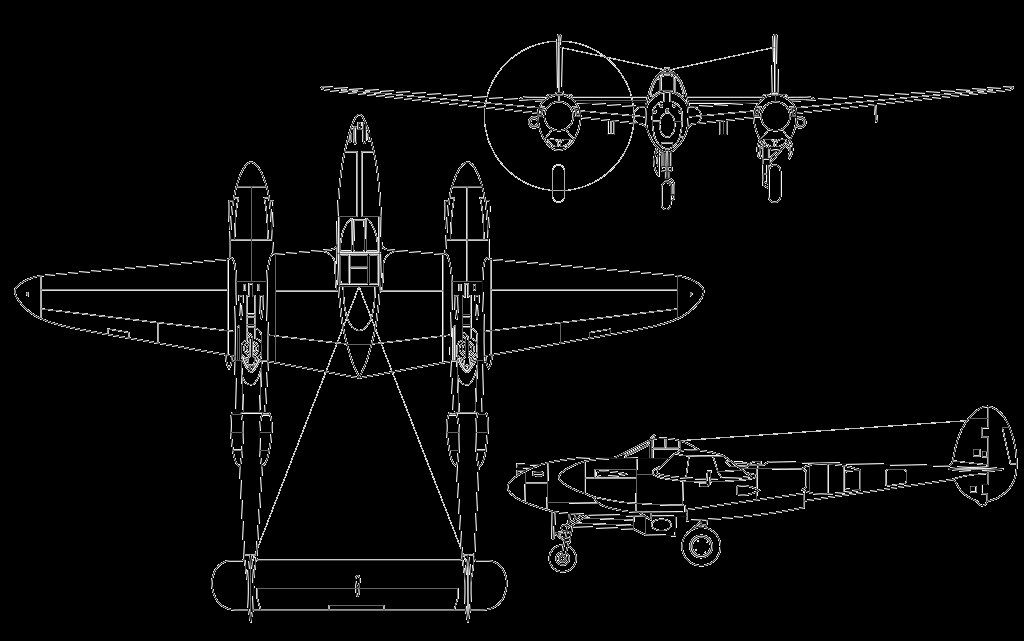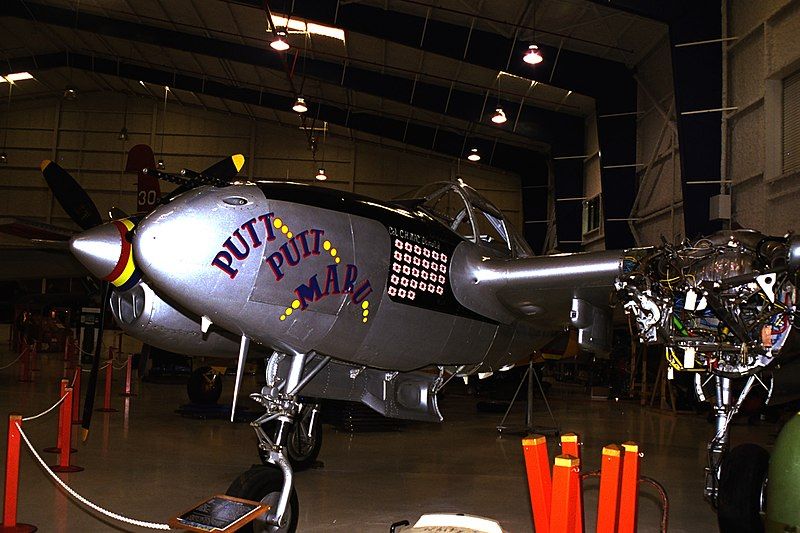Summary
- The P-38 Lightning was highly successful and iconic in WWII combat.
- It was known as “Der Gabelshwanz Teufel” and operated in both the European and Pacific theaters.
- The P-38 shot down hundreds of German and Japanese aircraft, with many pilots becoming aces.
Its Luftwaffe adversaries in the European and Mediterranean/North African Theatres of WWII called it “Der Gabelshwanz Teufel (the fork-tailed devil).” Its manufacturer called it “the most innovative plane of its day.”
Whatever descriptors one chooses to describe the warbird in question, there’s no doubt that America’s Lockheed P-38 Lightning was one of the most iconic and successful fighter planes on World World II. Simple Flying now looks at how the P-38 revolutionized aerial combat during that war.
By total coincidence, the standard-issue sidearm of Nazi Germany’s armed forces during WWII was also designated the P38, as in the Walther P38 9mm pistol.
P-38 Lightning early history and specifications
The Lockheed P-38 Lightning made its maiden flight on January 27, 1939, and entered into official operational service with the US Army Air Corps (later US Army Air Forces [USAAF], and, two years after WWII ended, the US Air Force [USAF]) in July 1941. Digging back further into its roots, we turned to the Lockheed Martin info page:
“First conceived in 1937 by Lockheed chief engineer Hall L. Hibbard and his then assistant, Clarence “Kelly” Johnson, the twin-boomed P-38 was the most innovative plane of its day, combining speed with unheard-of advances: two supercharged engines and a potent mix of four 50-caliber machine guns and a 20-mm cannon.”
“Upon its official introduction in 1940, the P-38 was capable of climbing to 3,300 feet in a single minute and reaching 400 mph, 100 mph faster than any other fighter in the world. It also doubled as an intimidating long-range threat, capable of carrying a larger payload than early B-17s and boasting a range of 1,150 miles.”
If Kelly Johnson’s name rings a bell, it should. In 1943, he would go on to head up Lockheed’s legendary “Skunk Works” division, which would produce such iconic warbirds as the P-80/F-80 Shooting Star (the first American jet fighter to be used in combat), the U-2 “Dragon Lady” spy plane, the SR-71 Blackbird (fastest air-breathing aircraft ever designed), and the F-117 Nighthawk (the original “stealth fighter”).
Specifications of the P-38 (more specifically the P-38L) included:
|
Fuselage Length: |
37 ft 10 in (11.53 m) |
|
Wingspan: |
52 ft 0 in (15.85 m) |
|
Height: |
12 ft 10 in (3.91 m) |
|
Empty Weight: |
12,800 lb (5,806 kg) |
|
Max Takeoff Weight: |
21,600 lb (9,798 kg) |
|
Powerplant: |
2 × Allison V-1710 (-111 left hand rotation and -113 right hand rotation) V-12 liquid-cooled turbo-supercharged piston engine, 1,600 hp (1,200 kW) each WEP at 60 inHg (2.032 bar) and 3,000 rpm |
|
Max Airspeed: |
414 mph (666 km/h, 360 kn) on Military Power: 1,425 hp (1,063 kW) at 54 inHg (1.829 bar), 3,000 rpm and 25,000 ft (7,620 m)[ |
|
Combat Range: |
1,300 mi (2,100 km, 1,100 NM) |
|
Ferry Range: |
3,300 mi (5,300 km, 2,900 NM) |
|
Service Ceiling: |
44,000 ft (13,000 m) |
|
Armament: |
|
Regarding the gunnery configuration of the P-38, Jesse Beckett of War History Online says this in a November 2021 article:
“The aircraft had no guns in the wings, as was customary for US fighters, but were instead placed in a cluster on the front of the central pod. This gave the P-38 excellent accuracy up to almost 1,000 meters, as the bullets had no convergence point. Wing-mounted guns were set to cross over at a specific range, making hitting a target nearer or further than this point difficult. ”
Operational performance Part I: European and Mediterranean Theatres of Operations in WWII
Going back to the German nickname for the P-38 mentioned in the opening sentence of this article, as noted by David C. Cooke in his 1958 book Fighter Planes That Made History (a sentimental favorite from my early childhood; I first started reading it at the tender age of 5):
“‘Except for Der Gabelschwanz Teufel [the fork-tailed devil] we might hold the air,’ German pilots complained after Lightnings shot them down over North Africa…The P-38 was the first American plane to shoot down a Nazi machine during the war–a patrol bomber which was spotting Allied shipping for German submarines near Iceland.”
According to Lockheed Martin, the Nazi patrol bomber in question was a Focke-Wulf FW 200 Condor, and the shootdown took place on August 14, 1942.
In addition, the legendary Brigadier General Robin Olds (July 14, 1922 – June 14, 2007), who ended up scoring a total of 16 aerial victories across WWII and the Vietnam War, bagged his first five kills in a Lightning before transitioning to the P-51 Mustang.
Operational performance Part Deux: Pacific Theater of Operations in WWII
The props, they counter-rotate
She’s smattered and smitten from Burma to Britain
Way out on some lonely atoll
For I am too young to die
–Verse 1 of “Give Me Operations” as sung by Dick Jonas, Lt. Col., USAF (Ret.)
To quote Mr. Cooke’s book again:
“But while the P-38 rolled up hundreds of victories against the Germans, it was in the Pacific that the fighter made its greatest score. According to official U.S. Air Force records, Lightnings shot down more Japanese aircraft than any other Allied fighter. Major Richard Bong [September 24, 1920 – August 6, 1945], the American Ace of Aces in World World II, destroyed all forty of his Japanese victims while flying a P-38. He was closely followed by another Lightning pilot, Major Thomas McGuire [August 1, 1920 – January 7, 1945], who scored thirty-eight kills in the Pacific.”
More specifically, the P-38 downed more than 1,800 Japanese aircraft, with more than 100 of her pilots attaining ace status. In a tragically ironic twist of fate, Dick Bong would survive WWII aerial combat, only to be killed in a Stateside accident whilst test-flying the aforementioned Lockheed Skunk Works P-80 Shooting Star.
Meanwhile, “Tommy” McGuire was KIA in the Philippines when he stalled and crashed his Lightning whilst attempting to engage a Nakajima Ki-43 “Oscar” fighter.
Often lost in the shuffle is the fact that America’s #3 highest-scoring ace of the Pacific Theatre, Col. Charles Henry “Mac” MacDonald (November 23, 1914 – March 3, 2002), also flew a Lightning (affectionately nicknamed the Putt Putt Maru) against the Japanese, scored 27 kills in his own right.
Ergo, the Lightning won the gold, silver, and bronze medals (so to speak) of the campaign.
For the basis of comparison, America’s top two aces of the European Theatre, Col. Francis “Gabby” Gabreski and Lt. Col. Robert S. “Bob” Johnson, bagged 28 and 27 kills, respectively whilst flying the Republic P-47 Thunderbolt.
Moreover, the Lightning scored arguably the single most impactful individual shootdown of the Pacific Theater of WWII on April 18, 1943, it was the platform used to fatally shoot down Imperial Japanese Navy (IJN) commander-in-chief Admiral Isoroku Yamamoto, a deathblow from which the collective morale of the IJN never truly recovered. Official credit for the Yamamoto kill is still split between Col.
Thomas George Lanphier Jr. (November 27, 1915 – November 26, 1987) and Col. Rex T. Barber (May 6, 1917 – July 26, 2001), though modern historians assert that Col. Barber deserves all of credit for the kill.
To cite the Lockheed Martin info page one more time:
“As a World War II fighter, the Lightning’s legacy is unmatched…Perhaps Colonel Ben Kelsey, a P-38 test pilot, summed up the war bird’s legacy best of all. ‘(That) comfortable old cluck,’ he said, ‘would fly like hell, fight like a wasp upstairs, and land like a butterfly.’”
Where are they now?
Out of the 10,037 P-38s built between 1941 and 1945, 26 airframes survive today, of which ten are airworthy. One of the most noteworthy of the airworthy specimens is Serial No. 44-53186, “Pudgy V,” a P-38L named and restored by the Collings Foundation (American Heritage Museum) in Hudson, Massachusetts, in honor of Maj. McGuire’s plane.
Meanwhile, one of the most noteworthy static display specimens is “Putt Putt Maru,” the aforementioned warbird flown by “Mac” MacDonald; it’s on display at the Lone Star Flight Museum in Galveston, Texas.



